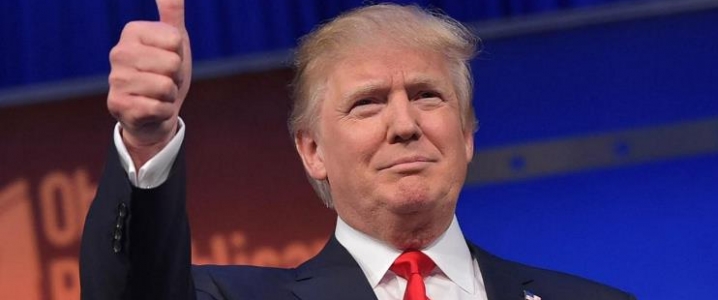Oh no, here we go! This morning, Donald Trump, who seems to be constantly looking for a controversy to deflect from the gathering clouds of the Mueller investigation, decided to tweet out his opinions on the price of oil. Up to this point, the energy markets have largely been spared the need to do what I refer to as TTT (Trading Trump’s Tweets), so to understand the implications of this we need to look at how stock traders have learned to handle the occasional words of wisdom our leader shares via Twitter.
What traders in other markets have learned is that Presidential disapproval of a company is a great contra-indicator for its stock. The natural inclination when the most powerful person in the world expresses an opinion on a market or company is to take a position in line with that view. In almost every case of Trump’s tweets, however, that has proven to be the wrong move.
(Click to enlarge)
This is not a recent phenomenon. It even pre-dates the Presidency. The above chart goes back to December of 2016 when then President-elect Trump tweeted out his views of Lockheed Martin (LMT). He said that he was unhappy with cost overruns on the F-35 program, and that led to a couple of days of big declines in the stock, marked by the blue arrow. You can see what happened after that.
At around the same time there were similar tough tweets about the cost of the next Air Force One being built by Boeing (BA), and that stock also reacted negatively. Once again,…
Oh no, here we go! This morning, Donald Trump, who seems to be constantly looking for a controversy to deflect from the gathering clouds of the Mueller investigation, decided to tweet out his opinions on the price of oil. Up to this point, the energy markets have largely been spared the need to do what I refer to as TTT (Trading Trump’s Tweets), so to understand the implications of this we need to look at how stock traders have learned to handle the occasional words of wisdom our leader shares via Twitter.
What traders in other markets have learned is that Presidential disapproval of a company is a great contra-indicator for its stock. The natural inclination when the most powerful person in the world expresses an opinion on a market or company is to take a position in line with that view. In almost every case of Trump’s tweets, however, that has proven to be the wrong move.

(Click to enlarge)
This is not a recent phenomenon. It even pre-dates the Presidency. The above chart goes back to December of 2016 when then President-elect Trump tweeted out his views of Lockheed Martin (LMT). He said that he was unhappy with cost overruns on the F-35 program, and that led to a couple of days of big declines in the stock, marked by the blue arrow. You can see what happened after that.
At around the same time there were similar tough tweets about the cost of the next Air Force One being built by Boeing (BA), and that stock also reacted negatively. Once again, the chart since the tweets (this time marked by a yellow arrow) tells the story…

(Click to enlarge)
Okay, you might say, but that was all a long time ago, so traders will have learned since then, and the move down in WTI this morning following Trump’s tweet must therefore be purely coincidental. You would be wrong. For example, on two separate recent occasions the President has railed on Twitter against Amazon (AMZN), whose Founder and DEO Jeff Bezos also owns the Washington Post which is frequently critical of the President. Once again, the market reacted, at least for a short time…

(Click to enlarge)
That is three examples, two from before the inauguration, which I guess is understandable, and one from the last couple of weeks, which is not, of where markets have reacted negatively to a tweet from the Tweeter in Chief, and that reaction has proven to be a great buying opportunity. There are a lot of others in between as well.
It is not that traders are stupid, it is that they find it hard to believe that the words of POTUS have so little meaning or impact. What has ben shown time and again though is that they are just that…words. The tweets are not statements of policy, or even policy intentions, they are simply about venting angry thoughts, often brought on by the content of early morning cable news shows.
That lack of policy follow-up is, if anything, even more likely when it comes to the oil market than it has been on the other occasions. Trump is hardly the first world leader to be frustrated by OPEC’s (usually successful) attempts to manipulate the global price of oil and he won’t be the last, but thus far nobody has been able to stop them. In that context, tweeting angrily about the problem looks even more ineffectual.
The only logical conclusion of all this is that buying into the drop that Trump’s tweet this morning prompted is the right move. The bounce that follows the move may not be as sharp as that in AMZN or as long lasting as those in LMT and BA, but history indicates it will come and be at least enough to allow for a stop-loss order to be moved to above the entry point. That makes for the possibility of a virtually risk-free “trade to nothing”, and that is never a bad thing.

















